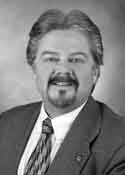 | Robb Rose is Director of Marketing Operations at Wesley Rehabilitation Hospital of Wichita. Robb is also a Respiratory Therapist, Boarded Disability Analyst and Adjunct Faculty for Wichita Sate University. He holds a Masters in Human Resources from Webster University. Robb serves on the American Lung Association Regional Council and the American Heart Association Board of Directors. Robb is married and has 2 children. He can be reached at (316) 729-9999 |
Health & Rehabilitation
2009-02-01 11:16:00
What is dysphagia?
Answer: There is a name for difficulty swallowing: dysphagia. There are several treatments or therapies which can be used, based upon correct diagnosis. Simple X-ray exams can uncover such anatomy-related issues as constrictions, blockage and spasm of the esophagus. These can be due to aging, injury, neuro-muscular issues, and simple tumors or growths. Surgical options and dilations of the esophagus are available.
If simple X-rays don’t define the issue, the physician can gain a more precise picture of the esophagus with a CT or MRI diagnostic procedure, and then choose options for treatment. Another diagnostic is a “swallow study,” which uses X-ray imaging while the patient swallows thick liquids or barium.
Interestingly, one of 17 people will deal with swallowing difficulties in their lifetime. About 15 million people in the United States suffer some form of swallowing difficulty, and more than 60,000 die from complications associated with swallowing disorders each year.
As recently as 10 years ago there were only thermal-tactile stimulation techniques and repeated swallowing exercises for patients diagnosed with dysphagia. Now “VitalStim Therapy,” more defined and specific, has been approved for use by the Food and Drug Administration. The inpatient or outpatient therapy is done by a credentialed speech therapist, who places electrodes on the patient’s throat and then uses gentle electric stimulation to help with the swallowing stimulus and process. Electrode placement is specific to each patient, as is the stimulation used.
“VitalStim” is used with patients who have had strokes, Parkinson’s disease, trauma, another neuromuscular diagnosis, cancer, etc. In studies, it has proved to be up to 98 percent effective with as few as 10 one-hour treatments.
Acute care hospitals, inpatient rehab facilities, and outpatient rehab clinics that employ speech therapists generally can provide this treatment with a physician order.


